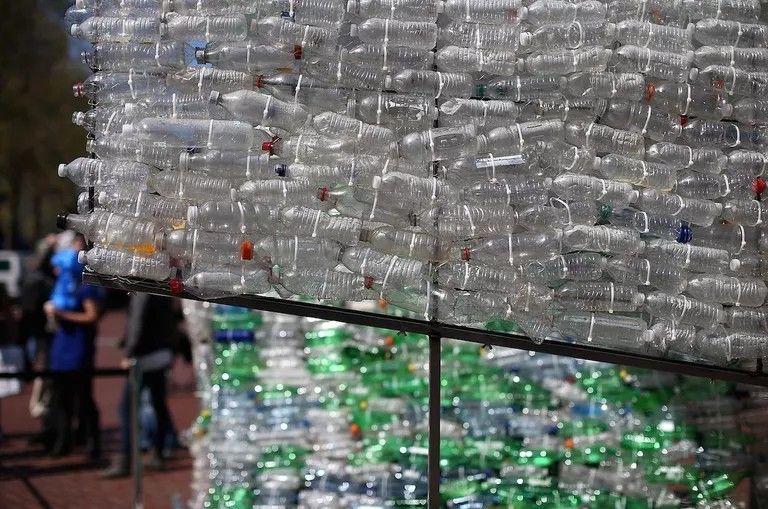Erilaisten muovien kierrätys
Understanding the numbers on plastic products and containers
By Earth Talk
Updated August 13, 2019
Plastic is a versatile and inexpensive material with thousands of uses, but it is also a significant source of pollution. Some worrisome emerging environmental issues involve plastics, including gigantic oceanic garbage patches and the microbeads problem. Recycling can alleviate some of the problems, but the confusion over what we can and cannot recycle continues to confound consumers. Plastics are particularly troublesome, as different types require different processing to be reformulated and re-used as raw material. To effectively recycle plastic items, you need to know two things: the plastic number of the material, and which of these types of plastics your municipality’s recycling service accepts. Many facilities now accept #1 through #7 but check with them first to make sure.
Recycling by the Numbers
The symbol code we are familiar with — a single digit ranging from 1 to 7 surrounded by a triangle of arrows — was designed by The Society of the Plastics Industry (SPI) in 1988 to allow consumers and recyclers to differentiate types of plastics while providing a uniform coding system for manufacturers.
The numbers, which 39 U.S. states now require to be molded or imprinted on all eight-ounce to five-gallon containers that can accept the half-inch minimum-size symbol, identify the type of plastic. According to the American Plastics Council, an industry trade group, the symbols also help recyclers do their jobs more effectively.
PET (Polyethylene terephthalate)
The easiest and most common plastics to recycle are made of polyethylene terephthalate (PET) and are assigned the number 1. Examples include soda and water bottles, medicine containers, and many other common consumer product containers. Once it has been processed by a recycling facility, PET can become fiberfill for winter coats, sleeping bags, and life jackets. It can also be used to make beanbags, rope, car bumpers, tennis ball felt, combs, sails for boats, furniture and, of course, other plastic bottles. However tempting it may be, PET #1 bottles should not be re-purposed as reusable water bottles.
HDPE (High-density polyethylene plastics)
Number 2 is reserved for high-density polyethylene plastics (HDPE). These include heavier containers that hold laundry detergents and bleaches as well as milk, shampoo, and motor oil. Plastic labeled with the number 2 is often recycled into toys, piping, truck bed liners, and rope. Like plastic designated number 1, it is widely accepted at recycling centers.
V (Vinyl)
Polyvinyl chloride, commonly used in plastic pipes, shower curtains, medical tubing, vinyl dashboards, gets number 3. Once recycled, it can be ground up and reused to make vinyl flooring, window frames, or piping.
LDPE (Low-density polyethylene)
Low-density polyethylene (LDPE) is number 4 and is used to make thin, flexible plastics like wrapping films, grocery bags, sandwich bags, and a variety of soft packaging materials.
PP (Polypropylene)
Some food containers are made with the stronger polypropylene plastic (number 5) as well as a large proportion of plastic caps.
PS (Polystyrene)
Number 6 goes on polystyrene (commonly called Styrofoam) items such as coffee cups, disposable cutlery, meat trays, packing “peanuts” and insulation. It can be reprocessed into many items, including rigid insulation. kuitenkin, the foam versions of plastic #6 (for example, cheap coffee cups) pick up a lot of dirt and other contaminants during the handling process, and often just ends up being thrown away at the recycling facility.
Others
Last, are items crafted from various combinations of the aforementioned plastics or from unique plastic formulations not commonly used. Usually imprinted with a number 7 or nothing at all, these plastics are the most difficult to recycle. If your municipality accepts #7, good, but otherwise you will have to re-purpose the object or throw it in the trash. Better yet, do not buy it in the first place. More ambitious consumers can feel free to return such items to the product manufacturers to avoid contributing to the local waste stream, and instead, put the burden on the makers to recycle or dispose of the items properly.
EarthTalk is a regular feature of E/The Environmental Magazine. Selected EarthTalk columns are reprinted here by permission of the editors of E.
Edited by Frederic Beaudry.
Repost from: https://www.thoughtco.com/recycling-different-types-of-plastic-1203667
If the infringement please contact delete



